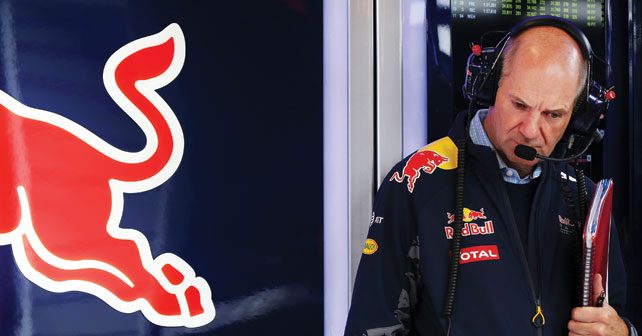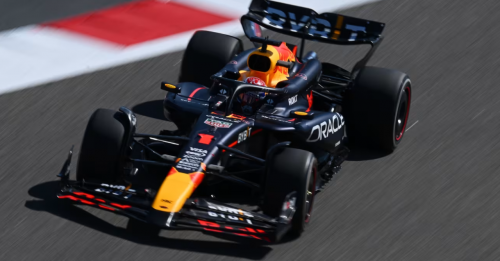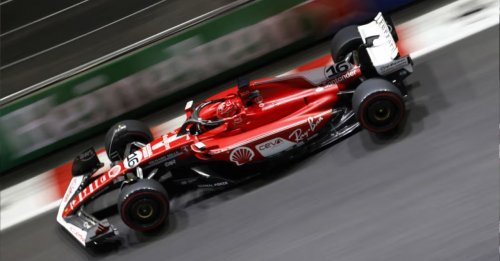Despite Red Bull Racing’s failing fortunes of late, Adrian Newey remains F1’s most prolific current technical chief. We caught up with him in Chennai to pick his sizeable brain.
If you are a follower of Formula 1, then it is quite likely that you know of certain reputations that follow some of the well known figures in the F1 paddock.
Among drivers; Fernando Alonso has often been branded as a troublemaker among teams and Sebastian Vettel is the super-protected and shielded Red Bull prodigy, who is now changing that perception slowly as he spearheads Ferrari’s return as a contender. Last but not least, Kimi Raikkonen is the supposedly aloof ‘Iceman’ who doesn’t care about anything except driving fast and winning races.
There are similar perceptions formed off the racetrack too. And one of these is of veteran F1 designer Adrian Newey. Supposedly he is an ‘aero god’, so good at designing aerodynamic solutions that he can’t think of a situation where aerodynamics is not the focal point of designing an F1 car.
One can see this going back to Indycar where technical regulations have always been designed to keep things as equal as possible among teams and where Newey got his start in 1986. Following which, Newey’s work with March-Lleyton House before he shot into F1 superstardom with Williams and then later McLaren and Red Bull Racing.
“For me innovation is the key,” said Newey when autoX caught up with him at the Madras Motor Race Track during the final round of the 2014/15 MRF Challenge. “I think the LMP1 regulations are very interesting as there is a lot more freedom on the chassis and the powertrain.
“It (LMP1) has been a little lucky so far because despite open regulations that could lead to a spending war the competition has been quite close. But it is easy to see a situation in which one team can become dominant due to its big budget but it’s an interesting example for F1 to learn from.”
Manufacturer spending in LMP1 has indeed gotten a bit out of control as Audi, Toyota and now Porsche invest heavily to best each other.
Based on the usual chatter around F1 one would think that Newey would favour such a situation as it would allow him to focus on aerodynamic development of a car to beat all others.
The reality though, is that Newey has the kind of experience that makes him someone who can make the difference between a team being an also-ran and a world beater about as much as a lead driver. And that does not just come from focusing on one area of F1 car design.
When the regulations allowed it, him and Patrick Head collaborated at Williams to produce what is still the most technologically advanced F1 car ever in the FW15C. The car featured automatic transmission, active suspension and even variable ride height. And this was in 1993!
With McLaren, Newey tried out the ‘brake-steer’ system where the rear wheels of the 1998 MP4/13 could effectively be steered with a third pedal that worked just the rear wheels. The 2000 MP4/15 featured the use of magnesium in the construction of the engine but both of these systems were banned in an effort to prevent other teams from spending a lot to copy similar systems.
The highlight of Newey’s time at Red Bull Racing has been the double and then blown diffuser from 2009 onwards as tight regulations meant a focus on aerodynamics as a means to gain performance. It was then, during the start of the social media era that his reputation as an aero-only designer got established.
Newey is certainly the last person one would expect to advocate a limit in aerodynamic research in F1 but to our surprise, that is exactly what we found out while speaking to him.
“I’m not suggesting that we go back to the 1970s,” said Newey with a chuckle when asked if F1 needs to go as far back as the era of ‘hit and miss’ aerodynamics. “Big F1 operations have aerodynamic teams of 80 people and if you add to that the production that is associated with it and it all adds up to a large number of people.”
Newey admitted that when it comes to the chassis of an F1 car – tyres and powertrain being the two other broad technical components – aerodynamics remains the largest performance differentiator, hence the reason for the hiring of a lot of super smart and highly paid staff in that area. Not to mention the physical testing facilities dedicated to aerodynamic research.
Making such a suggestion doesn’t fit Newey’s reputation, however, although he was quick to point out that he didn’t want to restrict the role of aerodynamics in F1, but rather just the testing that is associated with it.
“What I would really want is to restrict the testing facilities, which would free up the aerodynamic regulations,” said Newey. “If that could be restricted then we could be back at the level of 10 or 15 years ago, where the levels are still very high but it is not quite the spending war that it has become.”
One of the solutions that Newey offered was to stop wind-tunnel testing all together and allow only Computational Fluid Dynamics (CFD), a tool that is widely used in the automobile industry and has advanced a great deal. And even though CFD has some limitations as compared to wind-tunnel testing, Newey is willing to accept them in order to try and come up with innovative solutions while burning through a lot less money.
“It (CFD) offers some advantages over wind tunnel testing and limitations too,” said Newey. “One of the biggest limitations would be that we can measure a car’s aerodynamic performance much quicker and in a variety of conditions that we would encounter on track in a wind tunnel and with many data points at a time. In CFD you can only test one data point at a time, which increases the time to fully ‘map’ a car’s aerodynamic performance.
“The upside of CFD is that there is no physical hardware associated with it and it is purely computing power and software.”
Newey was confident that such an approach would still allow for innovation in F1 aerodynamics, thereby allowing a balance between aero, engines and mechanical grip in the overall design of the car.































Write your Comment